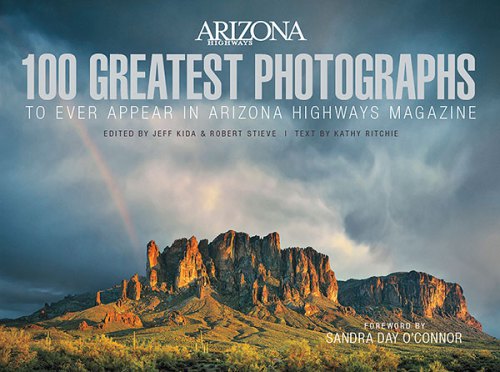
Courtesy of University of Arizona Press
Just in time for Arizona’s Centennial, author, researcher and professor, Thomas E. Sheridan, has come out with a revised and expanded edition of his book, Arizona: A History. In this latest tome, Sheridan addresses contemporary issues like land use, water rights and suburban sprawl. A life-long resident of the state, he puts forth new ideas about what a history should be, while embracing a holistic view of the region.
Sheridan is a research anthropologist at the Southwest Center and a professor at the School of Anthropology at the University of Arizona. He is also the author of 12 other books.
Below, Sheridan talks about his book, game-changers and how we’ve done as a state so far:
How does this history of Arizona compare to some of the other history books out there?
Arizona: A History, Revised Edition, focuses on the major political and economic processes that have shaped Arizona for at least the last 12,000 years. In particular, I look at Arizona’s political ecology, especially the commodification of the Four C’s – cattle, copper, cotton and climate – during the past 150 years. As the introduction says, “This book interprets Arizona’s past by organizing it into three major phases – incorporation, extraction, and transformation – that mark Arizona’s integration into what Immanuel Wallerstein calls the modern world system… Arizona has never developed in isolation, not even during pre-Columbian times. Other cultures, other centers of power, and other economic and political demands have always shaped the people living here, and those demands have accelerated with each phase. As they have, relations of race, class, gender, and ethnic identity in Arizona have changed as well.”
How long have you been researching this book?
I spent about five years researching and writing the original edition, which came out in 1995. I spent about a year revising the book. About a third of the revised edition is new material, including an entirely new chapter on “Arizona in the Twenty-First Century.”
What event was the most significant in terms of changing our history?
The Columbian Exchange – the global ecological revolution triggered by the collision of the so-called Old World of Europe, Asia, and Africa with the New World of the Americas beginning in 1492 – transformed the way people lived in Arizona along with the rest of the world. Old World diseases like smallpox and measles, Old World animals like horses and cattle, Old World plants like winter wheat changed the way Native Americans in Arizona ate, fought, and died. Old World peoples like the Spaniards, Mexicans, and Anglo Americans changed the political and demographic dynamics. The Columbian Exchange continues to shape our lives as Arizonans today.
Who was one of the game changers in Arizona?
More than anyone else, President Teddy Roosevelt shaped the state we live in today. Roosevelt created the Reclamation Service, which built Roosevelt Dam. At the dam’s dedication in 1911, Roosevelt called it one of “two great achievements of his administration,” the other being the Panama Canal. Roosevelt Dam tamed the Salt River. Without it, there would have been no Salt River Project, no cotton boom, no metropolitan Phoenix, because the dam provided both irrigation water and hydroelectric power. In many respects, then, Roosevelt Dam gave birth to modern Phoenix.
Teddy Roosevelt also created the national forest system, withdrawing millions of acres of Arizona forests and desert from the public domain. Imagine rural Arizona without its national forests, and the national parks and monuments that came later. Because of Arizona’s federal lands, the state belongs to the American people as much as it does to those of us who live here.
Why is it so important for Arizonans to know our state’s history?
Most Arizonans are newcomers, not natives. In the words of the Preface, “The history of Arizona is not a linear progression from wilderness to civilization. Instead it is a series of advances and retreats, accommodations and blunders, booms and busts. Many peoples have lived here over the past twelve thousand years or more, but the overwhelming impression their history conveys is the transitory nature of human occupation in this arid land. That is why history is so important. The lessons of the past may not prevent mistakes in the future, but at least they can help us inhabit a particular landscape and learn a little about its mysteries, beauties, and cruelties. Otherwise, we are nothing more than carpetbaggers or tourists.”
We’re 100 years old…how do you think we’ve done so far?
People should read the book and decide that for themselves.











